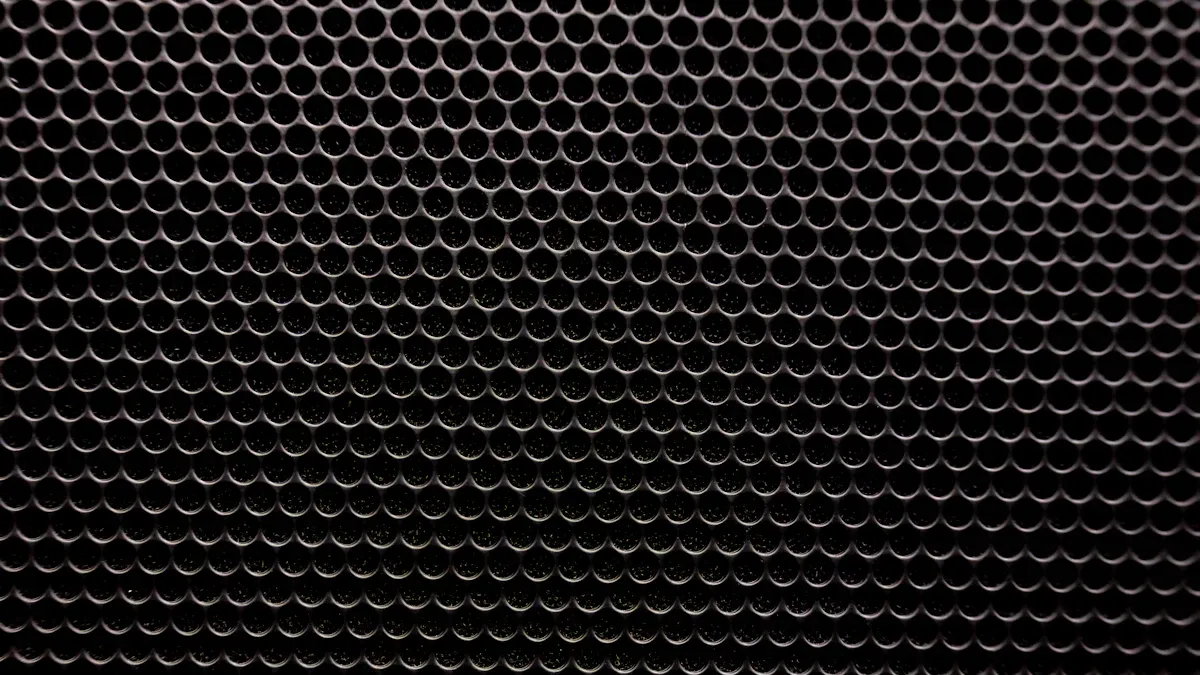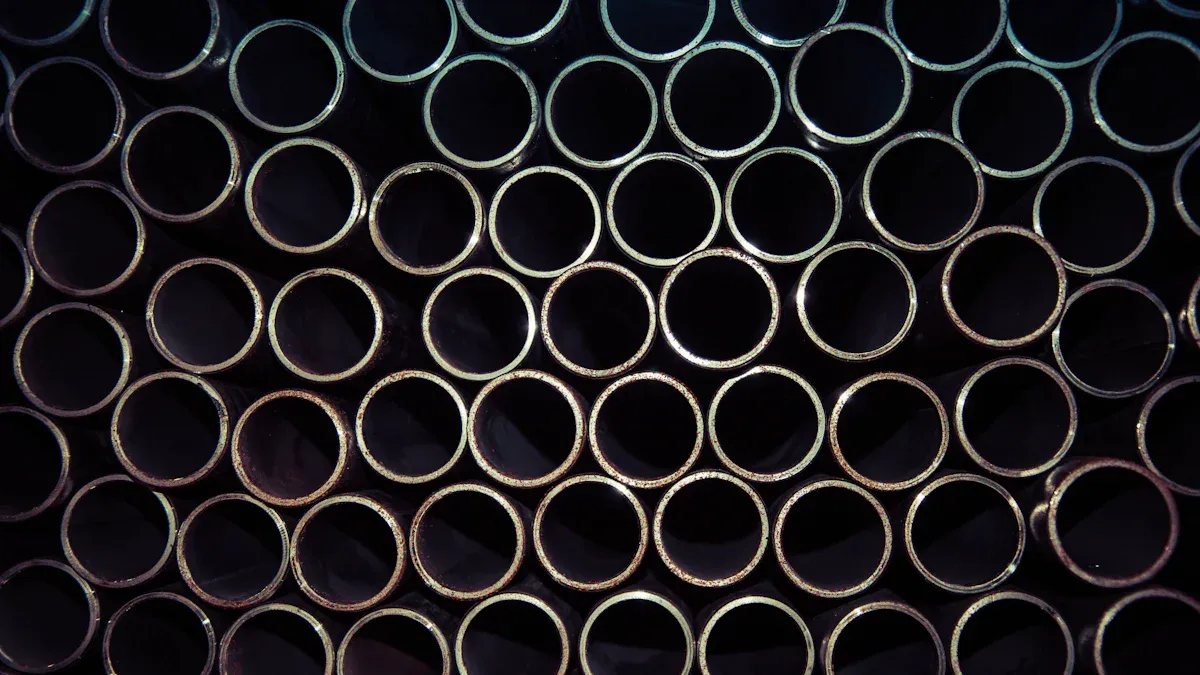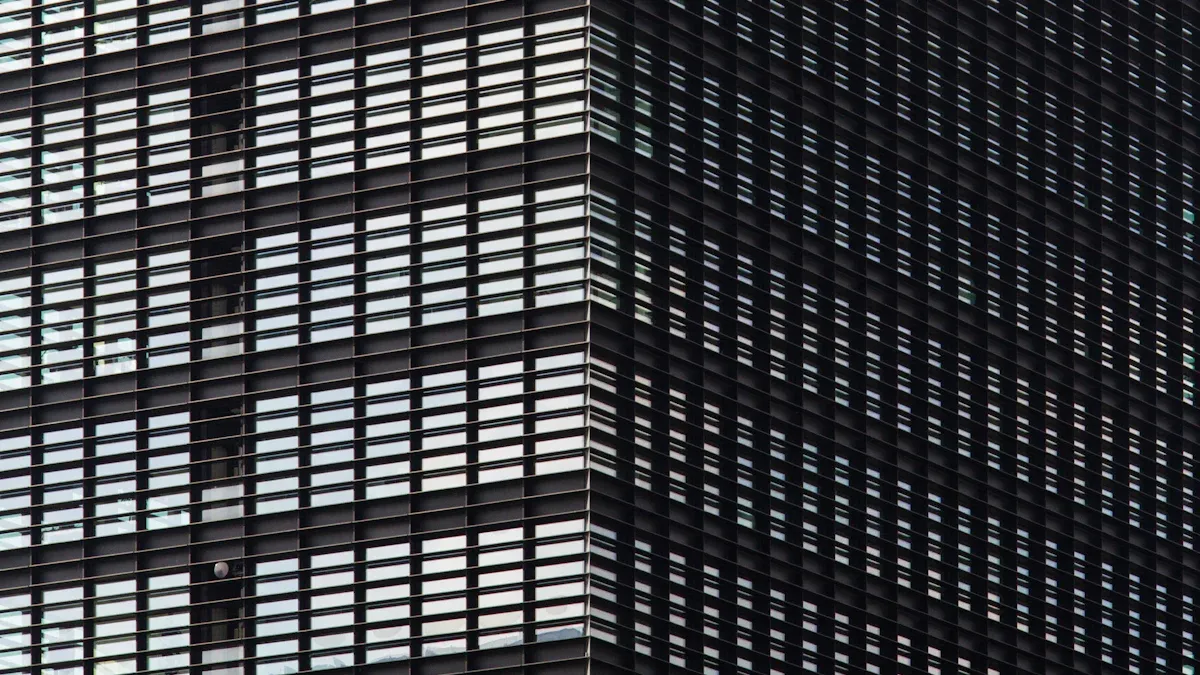Understanding Black Anodized Aluminum and Its Benefits

Black anodized aluminum is aluminum changed by an electrochemical process. This process makes the surface strong and resistant to rust. It also improves how the metal looks and feels. People use it for things that need tough materials with a smooth look. Its toughness against damage is useful in electronics and airplanes.
What Is Black Anodized Aluminum?
Definition and Characteristics
Black anodized aluminum is aluminum treated with a special process. This process, called anodizing, makes the surface stronger and tougher. It adds a protective layer that becomes part of the metal. This layer doesn’t chip or peel, so it lasts a long time.
A big benefit of black anodized aluminum is its ability to resist rust. The anodizing process creates a shield that blocks water, chemicals, and sunlight. This makes it great for outdoor use or tough environments. The surface can also be dyed black, giving it a modern and stylish look. Its mix of strength and good looks makes it popular in many industries.
Feature | Details |
|---|---|
Strength | The tough oxide layer makes it durable and rust-resistant. |
Rust Protection | It blocks water, chemicals, and sunlight to prevent damage. |
Stylish Look | The black finish adds a sleek and modern appearance. |
Heat Control | It absorbs and spreads heat, keeping equipment cool. |
Smooth Surface | The layer reduces friction, helping moving parts work better. |
How Black Anodized Aluminum Differs from Regular Aluminum
Black anodized aluminum is different from regular aluminum because of the anodizing process. Regular aluminum has a thin oxide layer that offers little protection. Anodizing makes this layer thicker and stronger, improving its resistance to damage.
Another difference is how it looks. Regular aluminum is shiny and plain, while black anodized aluminum has a dark, smooth finish. The black color comes from dyes added during the process. This dark surface also helps absorb and spread heat, which is useful for electronics.
Black anodized aluminum performs much better than regular aluminum. Its protective layer is part of the metal, making it harder and longer-lasting. Regular aluminum scratches and dents more easily. If you need something strong, stylish, and durable, black anodized aluminum is the best choice.
The Black Anodizing Process

What Is Anodizing?
Anodizing makes aluminum stronger by adding a protective oxide layer. Aluminum naturally has this layer, but anodizing thickens it. This makes the metal tougher and stops rust and damage. Unlike paint or coatings, the anodized layer becomes part of the aluminum. It doesn’t peel or chip, so it lasts a long time.
Tests show anodizing makes aluminum harder and less likely to wear out. It also lets the surface hold dyes, which is why it can turn black. Things like the type of aluminum, the liquid used, and how long it’s anodized affect the coating’s quality. Longer times create thicker layers that protect better.
Feature | Benefit |
|---|---|
Strength | Makes aluminum harder and less likely to wear. |
Durability | Adds a layer that lasts a long time. |
Corrosion Resistance | Stops damage from water, chemicals, and weather. |
How Dyes Make Aluminum Black
Dyes are important for turning anodized aluminum black. After anodizing, the surface can soak up color. Black anodizing uses three ways to add dye: electrolytic, inorganic, and organic. Electrolytic dyeing uses metal salts in a liquid bath. Inorganic dyeing uses pigments that don’t fade easily. Organic dyeing uses water-based dyes that go deep into the layer.
The type of dye changes how the black finish looks and lasts. Inorganic dyes are great for outdoor use because they don’t fade. After dyeing, sealing the layer is key to keeping the color and making it last.
Steps to Black Anodizing
Making aluminum black involves three main steps:
Anodizing: Aluminum is placed in an acid bath. Electricity creates a porous layer on the surface.
Dyeing: The anodized aluminum is dyed black using one of the three methods. This gives it a smooth, dark look.
Sealing: The pores are closed to lock in the dye. This makes the coating stronger and keeps the color. Nickel acetate or acid is often used for sealing.
Each step is needed to make high-quality black anodized aluminum. If you want to learn how to do this, knowing these steps is important.
Benefits of Black Anodized Aluminum
Corrosion Resistance
Black anodized aluminum is great at stopping corrosion. The anodizing process adds a strong layer to protect the metal. This layer blocks water, chemicals, and salt from causing damage. It works well in tough places like near the ocean, where saltwater can harm materials. Black anodized aluminum lasts a long time in these harsh conditions.
Aerospace and construction industries use it for its strength and rust protection.
Studies show adding Al2O3 to aluminum makes it resist rust better.
This protection makes black anodized aluminum perfect for outdoor and industrial use.
Durability and Strength
Anodizing makes aluminum tougher and stronger. The protective layer becomes part of the metal. This hard surface resists scratches and wear. It stays strong even with heavy use. Airplane parts made from black anodized aluminum are lightweight and safe.
Hard coat anodizing makes it even more resistant to wear. It’s great for things that face a lot of friction. Anodized aluminum keeps its quality for years. This makes it a smart choice for industries needing durable materials.
Aesthetic Appeal
Black anodized aluminum looks sleek and modern. Its stylish finish makes products like phones and laptops look better. It’s also used in buildings for its clean and lasting appearance. Companies like Apple use it for its simple design and fade resistance.
Almost half of anodized aluminum is used in architecture for its looks.
Big projects like Saudi Arabia’s NEOM use it for its durability and style.
Its mix of beauty and strength makes it popular in design-focused industries.
Eco-Friendliness
Black anodized aluminum is good for the environment. The anodizing process is safe and creates little waste. The material is recyclable, which helps reduce pollution. Choosing black anodized aluminum supports a greener planet.
Its long life makes it even more eco-friendly. Products made from it last longer, so they need fewer replacements. This saves resources and reduces waste. It’s a great option for industries that care about sustainability and performance.
Applications of Black Anodized Aluminum

Electronics and Consumer Devices
Black anodized aluminum is important in making electronics. It is light and spreads heat well, making it great for phones, laptops, and tablets. The anodized layer keeps these devices safe from scratches and damage. This helps them stay looking new for a long time. The black color also gives gadgets a fancy and modern style that people like.
Companies like it because it lasts a long time. The coating stops rust, even in wet places. This makes it good for devices used outside or in tough conditions. Its mix of strength and good looks makes it a favorite in the tech world.
Automotive and Aerospace Industries
Cars and airplanes use black anodized aluminum for many parts. Engine parts, frames, and trims benefit from its strength and durability. The anodized layer protects these parts from heat, friction, and chemicals.
Performance Indicator | Description |
|---|---|
Coating Thickness | Between 5μm and 25μm for even protection. |
Hardness | Meets HV150 or higher for scratch resistance. |
Wear Resistance | Tested with wheels to ensure it lasts longer. |
Corrosion Resistance | Passes salt spray tests without peeling or rusting. |
Adhesion | Strongly sticks, proven by cross-hatch or pull tests. |
These features show why black anodized aluminum is trusted. It is light but strong, making vehicles and planes safer and more efficient.
Architectural and Decorative Uses
In buildings, black anodized aluminum is both strong and stylish. It resists rust, so it works well outdoors. It also doesn’t scratch easily, keeping its nice look for years.
Metric | Description |
|---|---|
Corrosion Resistance | Blocks moisture and dirt, stopping damage. |
Durability | Stronger than untreated metal, resisting scratches and wear. |
Aesthetic Appeal | Comes in many finishes, perfect for decorative building uses. |
Architects like black anodized aluminum for its modern and clean look. It is used for walls, window frames, and design panels. Its mix of usefulness and beauty makes it a top choice for homes and offices.
Comparison with Other Coatings
Black Anodizing vs. Powder Coating
Black anodizing and powder coating are different in strength and use. Anodizing makes a layer that becomes part of the aluminum. This layer is stronger against scratches and rust than powder coating. Powder coating sits on top and can chip or peel over time.
Anodizing also gives a smoother and longer-lasting finish. The black color from anodizing stays dark, even in sunlight. Powder coating comes in many colors but can fade with time. For a strong and sleek finish, anodizing is the better choice.
Black Anodizing vs. Painting
Painting aluminum is a fast way to add color. But it’s not as strong as anodizing. Paint forms a thin layer that can scratch or peel. Anodizing creates a tough layer that’s part of the aluminum, making it harder to damage.
Painted surfaces need more care. You might have to repaint or fix scratches. Anodized aluminum keeps its look for years with little upkeep. If you want something easy to maintain, anodizing is the best option.
Advantages Over Untreated Aluminum
Untreated aluminum doesn’t have the protection anodizing gives. Without anodizing, aluminum rusts faster in wet or salty places. Studies show anodized aluminum, like 6061 alloy, works better in seawater. The anodized layer acts as a shield, making it stronger and rust-resistant.
Study Title | Findings |
|---|---|
Porous Layer Characterization of Anodized and Black-Anodized Aluminium | Anodizing improves looks and adds a layer that stops rust and damage. |
Influence of the Anodic Oxidation Treatment on the Corrosion Behaviour | Anodized 6061 aluminum resists rust much better than untreated aluminum in seawater. |
Improving the Corrosion Behaviour of 6061 Aluminum Alloy | The anodized layer blocks rust and makes the aluminum stronger. |
Choosing anodized aluminum means getting a material that lasts longer, resists damage, and looks better than untreated aluminum.
Black anodized aluminum is strong, rust-proof, and looks great. It’s used in electronics, airplanes, and buildings because it’s versatile. This material works well in tough places while staying stylish. Learn how it can improve your projects with smart solutions. It offers lasting quality and helps the environment too.
FAQ
Why is black anodized aluminum good for the environment?
Black anodized aluminum can be recycled and lasts a long time. The process to make it creates very little waste. This makes it a smart choice for industries that want to help the planet.
Can black anodized aluminum handle outdoor use?
Yes, it can. It doesn’t rust from water, chemicals, or sunlight. This makes it perfect for outdoor things like building panels, window frames, and decorations.
How should you care for black anodized aluminum?
Wash it with gentle soap and water. Don’t use rough cleaners or tools that might scratch it. Taking care of it this way keeps it strong and looking nice for many years.
See Also
Anodizing Explained: Its Role in Die Casting Applications
The Advantages of CAE Analysis for Die Casting Design
2025 Outlook: Trends in Automotive Aluminum Die Casting
Enhancing Durability of Diecast Products Through Electroplating
A Guide to Various Powder Coating Techniques and Applications
About Hunan Puka
Established in 2016 and based in Hunan, China, with a liaison point in Berlin, we are a Tier 2 supplier for the automobile industry. We specialize in the production of customized aluminum die-casting parts designed for machines with a closing force ranging from 280 to 1250 tons, with subsequent manufacturing process CNC machining and surface treatment. Our commitment to quality is reflected in our accredited quality management system, certified by ISO9001:2015 and IATF16949:2016 standards.


